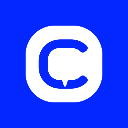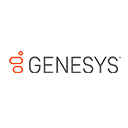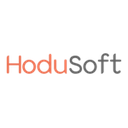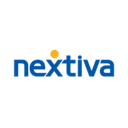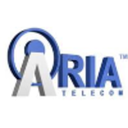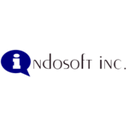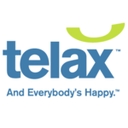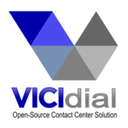Call Centre software: purchase guide
Call Center Software in 2025: Why It’s a Strategic Priority
If your idea of a contact center still involves outdated switchboards and agents juggling spreadsheets, we’ve got news: the call center has evolved—and fast. In 2025, it’s no longer just about answering the phone. It’s about delivering seamless, data-powered conversations across every channel your customers use.
Whether you’re managing a high-volume support desk, a B2B inside sales team, or a hybrid customer success operation, modern call center software is the engine behind responsive, efficient, and personalized service.
So, What Exactly Is Call Center Software Today?
Forget the old-school image. Call center software now refers to a suite of cloud-based tools that manage and optimize voice and digital interactions across your organization. We're talking about a control hub for everything from inbound queries to outbound campaigns—whether those happen over phone, email, chat, or even WhatsApp.
At its core, this software handles:
Call routing and queueing: Making sure the right person picks up—every time.
CRM integration: Giving agents instant access to the caller’s history and preferences.
Real-time analytics and dashboards: Letting managers see what’s happening on the floor.
Omnichannel communication: Because customers don’t always want to call.
And yes—it does all this while your team works from the office, at home, or both.
Why It’s Mission-Critical in 2025
Customer expectations aren’t just higher—they’re faster. People want instant answers, minimal friction, and human support that actually knows who they are. If your team can’t deliver that experience, someone else will.
Call center software has become essential for businesses that want to:
Scale efficiently without sacrificing service quality
Empower remote teams with the tools they need to collaborate
Create consistent customer experiences across every channel
Leverage real-time data to make smarter staffing and service decisions
Bottom line: great software doesn't just improve calls—it improves outcomes. And in 2025, that’s the difference between losing customers and keeping them for life.
What Makes Today’s Call Center Software So Effective?
Not all platforms are created equal. The best call center software in 2025 doesn’t just streamline phone calls—it transforms how your team communicates, collaborates, and delivers value. Let’s dive into the features that really move the needle—and why they matter.
1. Seamless CRM Integration
Ever had to ask a repeat customer to re-explain their issue from scratch? That’s a failure of context—and it’s entirely preventable.
Modern call center tools integrate deeply with your CRM, giving agents instant visibility into each caller’s history: past purchases, support tickets, preferences, and more. That means less time searching for answers, more time solving problems, and a dramatically better customer experience.
But it’s not just about convenience. When your phone system and CRM talk to each other, everything from call logging to follow-up reminders becomes automatic. The result? Cleaner data, fewer dropped balls, and smarter sales or support conversations.
2. Smarter Dialing and Call Routing
Your team’s time is too valuable to waste on busy tones or bad fits.
The best platforms offer multiple dialing modes—predictive, progressive, or preview—so you can match the right workflow to the right campaign. For instance:
Predictive dialing maximizes outbound efficiency by connecting reps only when someone picks up.
Preview dialing gives agents time to review details before each call—ideal for high-value clients or sensitive conversations.
Inbound call routing gets smarter too. Based on IVR input, customer profile, or even agent skill level, calls are directed where they’ll get resolved fastest. No endless transfers. No frustration. Just speed and relevance.
3. Omnichannel Agent Interfaces
Let’s face it—customers don’t just call anymore.
They email. They chat. They send DMs on social. The best call center solutions embrace this shift by giving your agents a single interface to manage all interactions, regardless of the channel.
Why does this matter?
It prevents fragmented conversations.
It gives agents full context across touchpoints.
It empowers teams to deliver consistent support—no matter where the conversation started.
Think of it like giving your team superpowers: one screen, all the info, zero guesswork.
4. Real-Time Supervision and Coaching
Even the best agents need support sometimes—and when things go south on a call, seconds count.
With real-time supervision tools, team leads can silently listen in, whisper guidance, or even join the call when necessary. Combined with live dashboards showing queue lengths, SLA status, and agent availability, this gives managers the visibility and agility to keep performance high—especially during peak periods.
Coaching becomes proactive, not reactive. And that’s how you turn good reps into great ones.
5. Insight-Driven Analytics
Data is only useful if it’s actionable.
Modern call center software doesn’t just track calls—it turns interactions into insights. You get real-time dashboards and reports that highlight:
First call resolution rates – Are issues being solved on the first try?
Average handling time – Are agents balancing speed with quality?
SLA breaches – Where are we missing our service commitments?
Agent comparisons – Who’s performing well—and who needs coaching?
Volume trends – When are your busiest hours, and are you staffed accordingly?
With this kind of visibility, you’re not managing blindly. You’re optimizing deliberately.
Core Use Cases and Operational Gains
Call center software isn’t just a tool for picking up the phone—it’s a strategic asset that solves real business problems across departments. Let’s break down where this technology shines, and the specific gains you can expect.
1. Customer Support That’s Consistent—at Scale
Whether you’re handling 100 or 10,000 calls a day, consistency matters. Call center software ensures every customer gets the same high-quality experience, thanks to:
Standardized scripts and workflows that guide agents through best practices.
Real-time context from CRM integrations, so no one ever has to repeat their issue.
Automated ticket creation and escalation, reducing errors and delays.
The result? Fewer handoffs. Faster resolutions. Higher customer satisfaction—without burning out your team.
2. Proactive Outbound Campaigns (That Actually Convert)
Cold calls aren’t dead—they just need to be smarter. Whether you’re running sales outreach, follow-up surveys, or reactivation campaigns, modern software gives you:
Contact list segmentation to target the right people with the right message.
Smart dialing modes to keep agents focused on conversations—not busy signals.
Real-time tracking of call outcomes to measure campaign performance on the fly.
Outbound calling becomes more efficient, more personalized, and more measurable. In other words: fewer wasted dials, more closed deals.
3. Workforce Visibility and Performance Management
Managing a growing team is hard without clear insight. Call center platforms make it easier by providing:
Live dashboards with call volumes, queues, and agent availability.
Performance reports highlighting KPIs like first call resolution, average handling time, and adherence to SLAs.
Call recordings and monitoring tools for training and quality control.
This visibility empowers managers to act quickly, spot bottlenecks, and coach effectively—all while keeping service levels consistent.
4. Business Continuity and Remote Work Readiness
In 2025, remote and hybrid work setups aren’t the exception—they’re the norm. Call center software makes it easy to:
Onboard remote agents without needing complex infrastructure.
Maintain call quality and compliance across geographies.
Provide support coverage across time zones with centralized oversight.
Whether you’re scaling internationally or managing a flexible team, the right software keeps your operations resilient, efficient, and fully connected !
Comparative Table: Top Call Center Tools in 2025
| Software |
Best For |
Key Strengths |
Things to Watch For |
Pricing Snapshot |
| Zendesk Talk |
Teams already using Zendesk for support |
Seamless Zendesk integration, unified view of customer interactions, real-time supervision |
Limited customization outside the Zendesk ecosystem |
Starts at €19/agent/month, cloud-based, free trial available |
| Aircall |
Small to midsize teams prioritizing fast setup and remote flexibility |
Easy onboarding, integrations with HubSpot/Salesforce/Slack, strong mobile support |
Can become expensive as teams scale, some features locked to higher tiers |
Starts at €30/user/month, 7-day free trial |
| VICIdial |
Tech-savvy teams needing deep customization |
Free and open-source, highly configurable for both inbound and outbound use cases |
Requires internal technical expertise, no official support unless outsourced |
Free (open-source), paid support optional, requires server setup |
| GoAutoDial |
Basic teams or nonprofits looking for simplicity |
Preconfigured CRM, easier UI than VICIdial, solid for small outbound campaigns |
Limited scalability, fewer customization options than its parent platform |
Free (open-source), optional paid support, installation required |
| 3CX |
Teams needing cloud/on-prem deployment flexibility |
Offers VoIP, IVR, CRM integration, video calls, flexible hosting models |
Advanced features require paid plan, initial setup (esp. on-prem) can take time |
Free plan available, paid plans from €150/year |
Deployment Options – SaaS vs On-Premise
| Deployment Type |
What It Is |
Key Advantages |
Potential Drawbacks |
Best For |
| SaaS (Cloud-Based) |
The software is hosted by the vendor and accessed through a browser or app. |
- Fast setup, no infrastructure required
- Automatic updates
- Easy remote access for hybrid teams |
- Monthly/annual subscriptions
- Less control over server location or advanced configurations |
Startups, fast-growing teams, remote or distributed support teams |
| On-Premise |
Installed and hosted on your own servers or internal infrastructure. |
- Full control over data storage and security
- More customization possibilities |
- Requires in-house IT
- Longer setup and maintenance burden |
Enterprises with strict data compliance needs, or organizations with in-house IT infrastructure |
How to Decide Which Model Fits Your Business
When choosing between SaaS and on-premise call center software, here are five strategic questions to ask:
How fast do we need to deploy?
SaaS wins for speed. If you need a functioning system within days—not months—cloud-based platforms are ideal.
Do we have IT resources available?
On-premise gives you control, but demands IT muscle. If your team lacks the bandwidth, SaaS takes the pressure off.
How important is customization and integration?
On-premise solutions often allow deeper customization. But many SaaS platforms now offer extensive APIs and app marketplaces.
What are our data governance and security needs?
Highly regulated industries (finance, healthcare) may prefer on-premise for full data control. That said, leading SaaS providers are catching up with robust compliance (GDPR, HIPAA, ISO, etc.).
What’s our long-term growth plan?
Cloud-based systems scale easily across locations and time zones—ideal if your team is expanding fast or globally.
How to Choose the Right Call Center Software
Choosing the right call center software means going beyond checking off a list of features. The real challenge is finding a solution that fits your team’s daily operations, adapts to your growth, and improves the way you serve your customers.
Start by looking at how well the software matches your business model. Are you mostly handling inbound support calls, or is your team focused on outbound sales? Do you need advanced features like multilingual IVR, or will a simple routing setup do the job? The clearer you are about your use case, the easier it’ll be to identify the right fit.
Integration is another crucial factor. A call center platform should work seamlessly with your existing CRM, helpdesk, and internal communication tools. It’s not enough for vendors to say “Yes, we integrate.” Ask what that integration looks like—will calls automatically log to customer records? Can agents see account history during a conversation? Smooth integrations save time, reduce errors, and give your team better context when helping customers.
Don’t underestimate the importance of reporting, either. You need to see what’s happening in real time and over the long haul. Look for software that makes it easy to track key metrics like SLA compliance, average handling time, or first call resolution. Bonus points if reports are easy to export, customize, and share with the rest of your team.
User experience is just as important as feature depth. A platform that’s clunky or hard to navigate will frustrate your agents and slow down onboarding. Look for a clean, intuitive interface that makes everyday tasks—like logging calls or checking queues—quick and painless.
And finally, think about the future. Can the platform scale as your business grows? Will it support seasonal surges, new communication channels, or expanded teams across multiple locations? A good call center solution should be flexible enough to grow with you—not hold you back.
Conclusion: Make Every Call Count
Call center software in 2025 isn’t just about answering the phone—it’s about delivering fast, efficient, and personalized support at scale. The right tool brings your team closer to your customers, gives managers real-time visibility, and helps your business adapt to changing demands.
Whether you're aiming to streamline operations, boost agent productivity, or improve customer satisfaction, choosing the right platform—and rolling it out with care—can be a real game changer.
Start small, test smart, and scale with confidence.


